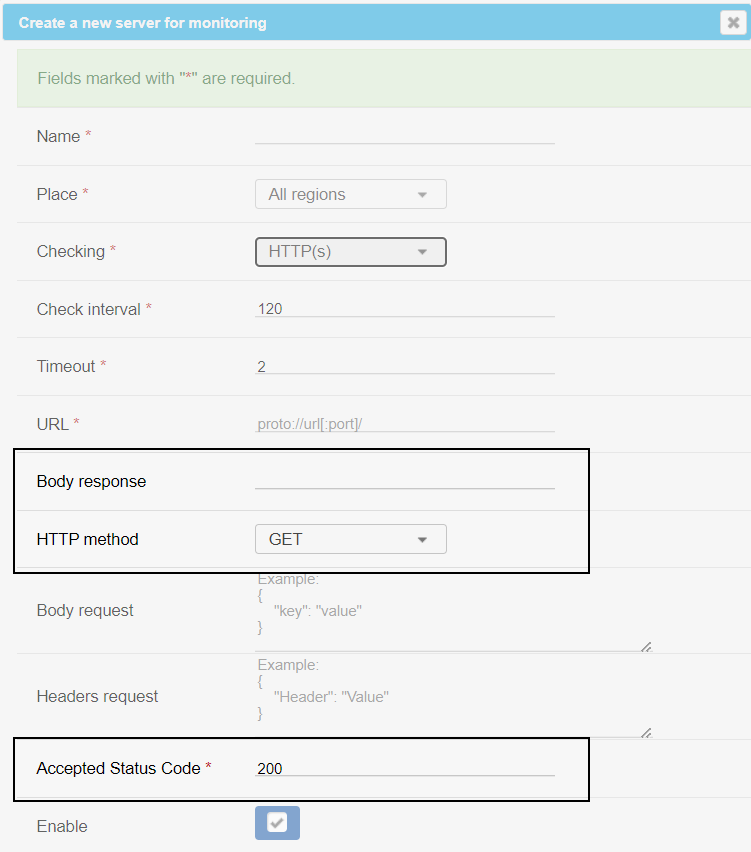HTTP check
RMON performs an HTTP(s) check by sending an HTTP or HTTP(s) request to a specified URL address.
It also checks JSONPath and the response headers. The headers check ensures that:
- Required headers are present;
- Unwanted headers are absent;
- Expected header values match.
RMON also allows users to select the HTTP method for the request in the "HTTP method" field. This enables users to specify whether they want to perform a GET, POST, PUT, DELETE, or other types of requests, depending on the nature of the service being monitored. For instance, a GET request might be used to retrieve data from a web page, while a POST request might be used to submit data to a server. Upon sending the request, RMON waits for a response from the server and evaluates the HTTP status code returned. A status code of 200 indicates that the request was successful and the server is functioning correctly. A warning message may be sent if the response code is anything other than 200.
In addition to monitoring the HTTP status code, RMON also checks the SSL certificate associated with HTTP(s) requests. If the SSL certificate is nearing its expiration date, RMON will send a warning message.
Another valuable feature of the HTTP(s) check is the ability to configure a body response check. This involves sending an HTTP(s) request to the specified address and examining the response body for specific keywords or phrases listed in the "Body response" field. This functionality is particularly useful for ensuring that the content returned by the server meets certain criteria. If the response body does not contain the specified words, RMON will send a warning message.
Additionally, you can specify the maximum number of redirects, acceptable status codes, and choose between Basic or mTLS authentication.
The check can be created for several countries, regions, or agents at once. To do this, select the desired category in the "Place" field and click + next to the countries/regions/agents for which you want to add the check. After creating the check, you can view the network route from the selected region by clicking on the check's name and then selecting the Show route icon.
Fill in all the necessary fields, including the "Retries" field, which specifies the maximum number of attempts the system will make to reach the service before it is marked as down and a notification is sent. To set a maximum response time, use the "Threshold timeout" field. If the response is slower than this value, the system will trigger a warning.
Additionally, you can specify the runbook in the "Runbook" field to provide a reference guide or set of instructions for troubleshooting the service in case it goes down.
RMON also allows users to configure notifications for alerts about any issues related to HTTP(s) checks by selecting from various channels, including Telegram, Slack, PagerDuty, Mattermost, and/or Email, when adding a new check.
You can also set an expiration date for the check, after which it will be automatically disabled, and specify the priority level for the alert notification.Full features list
- Checking ping availability
- Checking DNS records availability
- Checking the availability of TCP and UDP ports
- Checking HTTP statuses
- Checking the BODY of HTTP(S) responses
- Checking the CSL expiration date
- Sending Telegram, Slack, PagerDuty and Email notifications
- Real-time alerting via RMON web interface
- Checking network connectivity
- Providing information upon response time
- Providing information upon servers uptime and downtime
- Storing the alarm history
- Storing the history of events for each host
- Status pages
- Agents
